#Peripheral Design
Explore tagged Tumblr posts
Note

The steel battalion controller could fix me. Some company needs to make specialty mech controllers so i dont have to spend £350 on 2003 hardware (so i can spend £350 on 2025 hardware).
Mech game Controllers: Solving the unsolvable
I have put so much time into thinking about this and you've basically asked the perfect question.
I think there are really complex and important questions that nobody really has a good robust answer to but also that nobody is really asking those big questions in the first place either, so we're stuck on this issue.
My take is I genuinely think if we want big mecha controllers we have to think about this stuff deeply and profoundly. Like, why we need them and what they're for.
So… This has been tried many times.
NOK or NextOfKin Creatives did try this.
The Mek-Fu lopped horribly, and I was absoloutely fascinated by this at the time and wanted to understand exactly why it had failed. I think we must learn from this failure, so we don't make the same mistakes again.
The lesson I took from Mek-Fu was this: it didn't take because players had nothing to use it in where it was the best fit.
What does this mean?
1) For other games in the real world, it was inferior to keyboard and mouse in games which do not simulate a vehicle. 2) The design wasn't trying to meet some sort of pre-existing need from other games. 3) Steel Battalion emulation did not exist meaningfully yet, and in turn no equivalent game existed on the PC platform which would need it.
Therefor: There was no special environment where its employment made the best sense.
It had nowhere to excel and thrive.
So where have specialty controllers existed, and thrived?
Digital Combat Sim (DCS)
Star Citizen
Euro Truck Simulator
Farming Simulator
What do they all have in common?
They all have robust modding tools for user-created content
They all have some form of social experience or multiplayer
They all are highly accessible (PC, and are controller agnostic*)
They are all sandboxes in some capacity and let users find their own fun.
No mech game which exists at time of writing meets all these terms that I know of.
So what do these controllers look like?
In the case of real vehicles, you can simply ape the real vehicle 1:1, but for fictional vehicles, something special happens -- you see people approach and try to solve the problem in many different ways.
You see, control design in any area exists to solve a problem. The Mek Fu (a response to the VT controller) was a solution looking for a problem, and no problem existed.
From this, we learn that for specialty mech controllers to exist, you first need specialty mech games. Steel Battallion is limited, because it won't run on general hardware and doesn't network or mod easily so it isn't a good fit for this because it makes the game inaccessible and limited.
Let's actually think about the SB controller for a bit:
Steel Battalion approaches its problem from the standpoint of a robot. You might not realize this but a VT or Vertical Tank intentionally controls very similarly to a tractor.
It is influenced by a real thing. I know that sounds absurd, but let me show you what a modern tractor's task control console looks like:
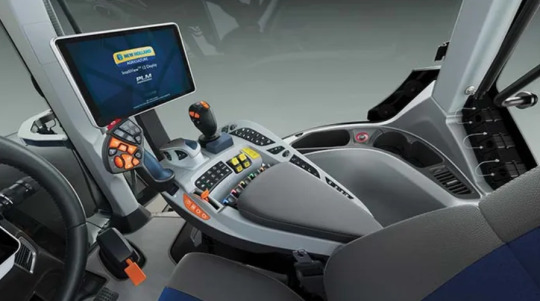
Yeah, not what any of us would have expected.
If you wanna be a mech pilot in 2025, go drive a tractor. I'm not kidding.
Once you're on the field, your hands aren't on the wheel, they're on this thing:
The big stick controls the course in the computer, the little one controls your tool, the many buttons toggle states (or what the little stick is currently triggering) and through these inputs you drive the tractor.
Steel Battalion is very fun, but it won't hold your attention for more than around 100 hours unless you're a real freak about tractors and just don't know it yet.
What's more, Steel Batallion isn't playable to anybody without the controller which limits how many people will be playing it and it isn't social or moddable like the successful games we talked about earlier.
Okay, so what can we do about this?
I think the one feature here that nobody talks about is that of input-agnosticism: The ability to bind your own inputs to something in the game (directly or indirectly through some middle thing) and get good results… But not in some hugely "okay bind 100 things using our controller, or use a keyboard and mouse" binary.
The binary is still not input-agnosticism, and it still will not work.
It has to be granular.
Input agnosticism results in controller agnosticism:
You can bind as much or as little as you want, and you can pass features you don't want to bind directly to a helper subsystem middle-man like an assistant or instructor which will perform limited tasks for you - while you provide the helpers context by telling them which of a limited set of goals you want to achieve.
Say, face a target, or a direction, or aim at a thing. It saves you mental time, though if you did it manually you might get better results (incentivising you towards experimenting in that direction).
Let's touch on why controller agnostic design is really what's needed here, and why its important:
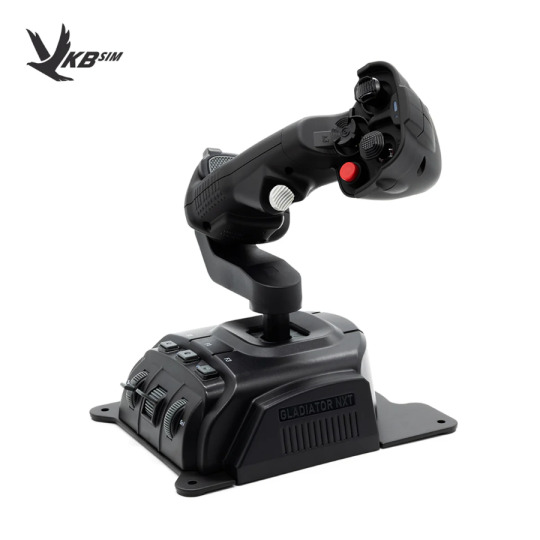
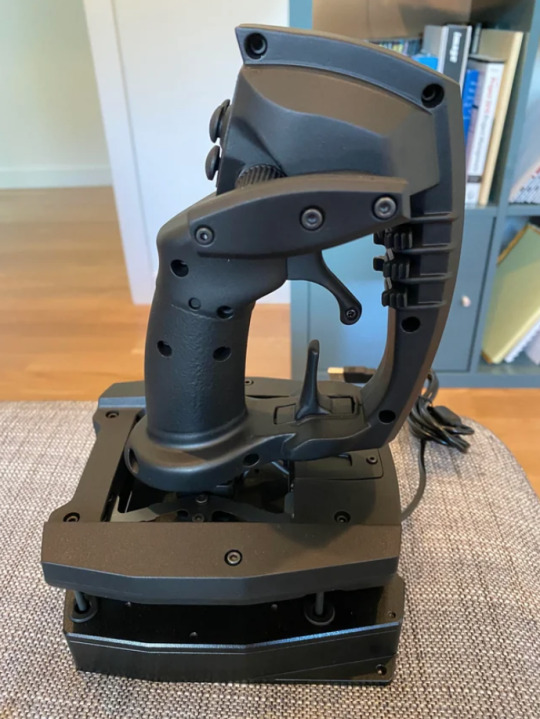
This is the omnithrottle, and and this is the Sublight Dynamics 6dof joystick.
The Omnithrottle tries to solve 6dof throttle management by adding an extra piece to a joystick at the bottom, turning the yaw z-axis-twist of the stick into a sort of vertical axis for direct up and down movement, ascending and descending.
The Sublight Dynamics 6dof joystick combines all six axis into a single device, and is an interesting experiment. I particularly like the puck switches ahead of the user's fingers, inspired likely by Evangelion which in turn was inspired by Sol Bianca's use of them.
We got great lessons in human factors for space dogfighting from both:
The omnithrottle produces huge fatigue if you use it in coupled mode (software assisted flight), because you have to hold the joystick base forward, fighting the springs. This is fine in decoupled mode (where you coast under newtonian force) but not everybody uses it. Likewise, if you remove that spring, you lose fine movement because you can no longer feel where the middle is anymore.
The SD6DOF creates a conflict in Fitt's law (speed and precision are enemies of each-other, and to get both you need a tool in the middle to help you) where some precision is lost due to the same muscles needing to drive more axis at once.
These are both many years old now, and over time we've seen many many solutions to this problem flop.
Well, VKB announced the Space Throttle Grip a few days ago, which rethinks the distribution of axis and combines the best features of both.
youtube
The key thing is, this is an evolutionary space with competing ideas. A healthy ecosystem.
And its only possible because the game's inputs are controller agnostic.
This doesn't just mean that it'll let you bind any input device directly to things, but that there are multiple ways to achieve your desired outcomes even on the software side with the helper middleman we talked about (in this case, coupling modes).
Does your machine turn to face an arbitrary vector which is the thing you actually steer or select (Warthunder)? Do you have direct input control? Do you haven an autopilot?
Here's a lecture by F22 Raptor test-pilot Randy Gordon talking about some of this stuff, giving you a frame of reference with a real vehicle which exists.
youtube
When you can pick between those goals them, you have what's called "a software" in human factors. Your two grips become arbitrary and are now called inceptors.
The software drives the machine, and you drive the software. You can override the software and provide a manual input, but the other elements you are not overriding will try to compensate to maintain a desired state. If you know how to manipulate this, it means you only need a small number of axis to achieve a very complex control action.
A great example is how long you hold the A-button in Mario changes how much power his jump has. The action is a versatile verb.
Imagine a person balancing. If their goal is to stay upright, and I push them, they translate across the ground and try to stay the right way up, turning that push force into horizontal force. They are following an instruction: remain upright.
If I make that person carry a very heavy thing, they compensate their body's balance accordingly. If I then use my finger and tell them to act as if I am pushing them with that gentle motion, they will respond but if they go too far they can say "hey, don't do that, I'll drop the heavy thing!" and ignore my pushing instruction -- because my directive telling them to remain upright superseded it.
We need to think of mecha in terms like these, and to do mecha, we need to make a standard of accessible rules like this which input devices can talk to via axis and buttons, with lots of middlemen.
Absolute (mouse-like) and relative (stick like) and accumiulated (driving a mouse with a stick by having a variable over time) and blended (driving a car with a d-pad with a simulated wheel that wants to return to zero all the time, replicating a stick) inputs must be middle-modes processing and digesting inputs in these ways. Curves matter. Biases and preferences must be accounted for.
This means finally solving "how" the giant robot works in software (even if its a design conceit), and then having systems which poke at the "how" to bias it in a direction toward an outcome.
My favourite version of this is a deliberately clumsy mech-game called Robot Alchemic Drive (RAD for short).
youtube
Playable on a regular PS2 controller, the triggers and bumpers drive the legs like a tank. The sticks drive the arms.
The robot's body has physics. You are controlling a thing.
There are no helpers to correct your motions other than when the robot stands up and to keep it upright (its otherwise 100% manual, playing back motion planning which gets fed into the physics) but yes, there is a simulated body here.
With helpers, this could get faster and way, way more fluent.
So how might these "helpers" in software work?
Think for example of how a body in motion continues to move. With a robot in a vacuum like space, you'd continue indefinitely. That's hard to control.
Do you automatically slow down and fake aerodynamic drag axially with your boosters to allow curved trajectories and soft stopping with a motion-control-decoupling-mode (as Star Citizen does), or do you have a breaking system a user can activate on a pedal or trigger, to apply those forces on different axis when they want them?
youtube
What are those axis bound to, the pelvis, the thorax, the head, the synthetic vision 3rd person camera?
These are really complicated questions, and this is just about how we make a vehicle come to a stop!
Now this might seem niche, but this exact same kind of thought also applies to how a robot balances, and how it digs its feet into the ground, creating torque or not situationally.
This isn't just fine grained motion like "moving our legs manually", but how and when we apply breaking force on the ground.
Do we apply it when we let go of the left stick?
Does the left stick prescribe a preferred velocity?
Does it prescribe input forces?
Do we change between these situationally, or maybe with a button?
Its important to think about these things.
"You're making this too complex!!"
"But why would we do this? What is the value? People are playing Armored Core 6 with a HOTAS!!"
Yeah, and that experience is not great, actually?
youtube
You're actually less capable than a keyboard and mouse-player, because Armored Core 6 isn't a game which simulates orientation over time (the body turns instantly as if by magic), so you're just driving relative inputs. You are literally disadvantaged.
Armored Core 6 has no "vehicle": This is an action-game's 3rd person control software. Its Elden Ring's horse, with a jetpack, and the roll replaced with a dash. Everything else is animations.
Its visually impressive, but there's something fundamentally missing:
Fahrvergnügen.
It means "driving pleasure" in German.
The feeling you get when you speed up going down hill, or you feel the give of the wheels against the road and the lean of the car when you take a corner.
When you bank against air in an aircraft, or turn faster than your velocity changes and you drift.
That good feeling, that's fahrvergnügen.
A game which really gets this I think is Armored Core: For Answer. I know many of you might have expected Mechwarrior here but the physics of Mechwarrior games are extremely simple, following an interpolative model.
youtube
Interpolative here means, a bit of calculus is used to ensure a smooth arching curve is how you go from zero to a high speed at all times, or a rotation, so on and so forth. This "smoothness" is the same smoothness present in Armored Core 6.
Armored Core For Answer on the other hand, is additive in how it calculates velocity per second, meaning your AC's velocity curve is inconsistent. The game has hidden stats calculating aerodynamic drag per part, it has a simplified model of angular momentum, and it has ground friction and its boosting system is different on each axis.
All of your inputs are analogue, including the angle of your boosters on left stick, and two booster-types: Your main booster handling like a motor-cycle throttle curve, and the other not only having many stages of output for flashes of thrust via contexts (combining motion and direction together to produce an intent) but also combos and even cancels. Its VERY sophisticated!
That's a lot of different factors to control. A lot of fahrvergnügen to be experienced when you master them, and feel ownership of them.
Lots of areas for skill expression.
This, combined with a rich weapon balance and a complex combat geometry (the emergent spatial and pressure rules of motion, aspects, angles and motions similar to the aircraft dogfighting) are why people are still playing this game today.
The match I uploaded was from four days ago, as of time of writing. People are still modding a game from 2008, limited to console by hacking the rom file's patches. Yeah.
I know among many game reviewers, "smooth" and "smoothness" is considered a compliment in game design (its easy to control), but interpolative motion really is the opposite of fahrvergnügen:
Interpolative suffers from feeling "zippy" and "hollow" when its fast, which is why lots of players and designers insist on slowing games down so they recover their fahrvergnügen.
You don't have to do things this way. A good mech sandbox should reward both fast and slow movement in its design!
There should be room for everybody to play!
In interpolative movement games, motion is already solved, to sell you the superficial power-fantasy (that you're good, despite not having learned how to be good) instead of giving you the experience.
Interpolation is insisting the burger you got at McDonalds is the same as the burger on the commercial. Like the burger at McDonalds, its also way way easier to make, and in today's market yeah, you take what's easy and known because you have economic pressures to get things done quickly.
You can't make a five star meal in a McDonalds kitchen, and the AAA games industry is the McDonalds kitchen of gaming.
So, what is a three star michelin meal, in terms of inputs, with additive movement?
You incentivise people with the cheaper stuff on the menu. That's robust helper tools which let keyboard and mouse players, or gamepads interact fluently.
Its affordable, and easy and gets people invested in your experience.
Then when people use fancy controllers, you get better response-rate. Because everybody buys into the mecha fantasy when they play, being beaten by someone who is controlling more complex control factors more directly at once (making them a better pilot) feels fairer.
They are negotiating the machine's limits better than you are.
You both know they more "an char" than you are:
youtube
It becomes aspirational, rather than annoying, which is how the culture of space-simming, and flight-sims, and other vehicle sims express this. It also fits the mecha fantasy, because those with basic controls are your grunt units.
We see this if we look at cockpit controls in Gundam: A Jegan's control inceptor is way simpler than say, Unicorn's.
It is just part of the fantasy.
So let's talk about these limits we negotiate.
It means, some kind of vehicle must be simulated in software, even if its a very simple abstraction purely enough so it feels good for players.
Also, I say "a software" or "helpers" what do I mean?
I don't just mean the simulated vehicle, but a robust modular middle system in the "player controller" part of the game simulation which interprets desired outcomes from a pilot user or operator and tries to achieve them.
Here's an example, let's talk about Armored Core's lockon system, which uses a software stack to turn your intention into an outcome in exactly this way.
Your robot's simulated sensors (radar, visual, etc) detects a list of potential targets…
Which uses camera orientation of a synthetic vision system to give you comprehensive 3d awareness to determine which target is interesting to you…
After selecting the target, it passes that information to the fire control system which computes a trajectory from its position and velocity…
This then talks to your weapons which know how fast your bullets go…
and this picks where to lead along that trajectory…
then that location is sent to the arms to execute that command…
Which then sends the state of this command chain to your HUD, so you understand what the body of your robot is currently trying to achieve.
Each step is influenced by ingame statistics and simulated mechanical limits -- meaning, how well you can lock up, or even select a target is very important.
You can't instantly put a cursor on something and bot a game, because everybody already has a deliberately limited aimbot, it came with your robot, to negotiate its deliberately limited body.
The key thing is, this is much much faster and more effective than you could as a human select the target manually and hit accurate than you could with round velocities -- with most videogames hiding this with hitscan (instantaneous bullet) weapons meaning whatever you click on is hit right away.
When the round takes time to get there, things are far more difficult. This is why almost nobody uses manual aiming unless they're throwing explosives at big bulky targets in AC.
From limitations like this, booster performance, turn-rate, and so on and so forth -- the negotiation of limits produces a combat geometry and how well you understand that combat geometry, and how well you understand your abilities to your opponents abilities dictates how the fight will go.
We see something somewhat similar in Steel Batallion with the lockon system but we also have a lot of deep manual control over our VT's orientations which change its balance and so on. Steel Batallion is in fact, one of the few games where your robot can fall over and get back up.
This is exactly how DCS and Star Citizen also work, and very similar principles apply in Eurotruck Simulator and Farming Simulator via the fuel, cooling, air, combustion cycle, and transmission, and shock absorbsion systems of your vehicle.
Okay, so now what?
I've been thinking for a while now about writing what I think would be the mech-game equivalent of the paper Tim Berners Lee wrote for the web (Information Management: A proposal) going into what I think the simulation would really need, what the software would need, what the controller would need and some suggested practical strategies for solving these problems based in real research I and others have done.
The system I've already built solves for fire control, fine arm motion, head movement, independent pelvis and foot motion, the operation of boosters and other similar systems in a 6dof environment which accounts for gravity, aerodynamics, balancing, alignment and full motion control -- all on a standard game controller. Its not modular yet, simply because I am not a skilled programmer, and would need real help to do this.
There's also game-design research here, which would ensure the combat geometry would reward skill expression via investing in that agnostic game design, so the control skill aligns with the power-fantasy through skill expression. This means no one strategy becomes overwhelming.
It likewise, also has the "for gamepad and keyboard/mouse" solve which would be needed to ensure its accessible for those who aren't ready yet for custom controllers.
In turn, it also has considerations and proposals for such likely controller designs and probable strategies of employment which of course translate and map to two big sticks, in a HOSAS (Hands on Stick and Stick) layout.
So what's your ideal controller?
Less a controller, and more a principle:
Key to the proposal is you can scale up the amount of control bindings, or scale it down passing automation to helper subsystems which take your intention and act on it in a useful way.
You could have just two plain sticks with foot pedals, or you could go ham and have some complex force feedback device with tons of inputs -- because of this input agnosticism.
The secret sauce I think to the highest end control is the use of software defined force-feedback not only for the two big sticks, but also four smaller ones: one each for your thumb, and one each for your finger on each hand, and an analogue trigger. I've seen this solved in open source projects, so its entirely doable.
What does this actually mean?

Source: KAIST-HCIL/FS-Pad
The purpose of a force-feedback stick is software defined -- driving the camera, pelvis, upper body, boosters, walking etc variably, with the feedback not necessarily telling you about the environment -- but also by providing what amounts to new input devices.
To explain, force feedback works by providing input to the stick like a robot arm and is not at all like a rumble feedback device. This means the position the stick "wants to return to" at any given time is not defined by springs like it is in a conventional controller, but by active software which can update in real-time.
This means resistance can be different in different directions, or the stick can even hold a position you give it in one axis but not another, replicating a hat switch or a flight throttle.
I've looked at many different open source projects which achieve these outcomes both on thumb-sticks and main sticks with great outcomes, and I think a prototype could be made if I had a team, or other people to work with.
If interest is expressed, I'll produce a specification proposal for what this input agnostic design in software needs to be (eg, how the robot is controlling) in strictly defined terms which can be implemented.
You can already see it on my Tumblr account as TOMINO, NAGANO, etc where I go into some of this -- all of which works on a standard controller, but adapts extremely well to a large HOSAS.
Likewise, I'd (eventually) also produce a proposal for a controller design which meets this specification.
I've been testing this concept on and off for many years now in Unreal Engine (I'm not a skilled programmer, not skilled with CAD or electronics, depression limits my effective outcome returns -- but I'm still getting very promising outcomes).
Ultimately what I'd really want access to is expertise and help, since my background is mainly thinking about and designing solutions for problems not necessarily implementing them -- and I'm essentially on disability, so I have unlimited time to think about this.
I don't want to ask for money, which I figure is the thing everybody is anticipating: I'd rather get this done than make money from it.
In conclusion?
To solve this what's needed isn't some figure of brilliance in a basement or garage somewhere, but an organic ecosystem of designers and builders responding to pressures, and we've already see that work many times very well.
In our case, nobody has defined the vehicle or the modular helpers in a way robust enough to capture every fantasy effectively.
That's the issue.
tl;dr coming away from this:
For the controller to exist, you first must have something to control.
To be a pilot, you first need a vehicle.
--
Live forever, Apes.
#.AskOsaka#Mecha#Mech#Mech Design#Game Design#Peripheral Design#Peripheral Concepting#human factors engineering#Human Factors#Scifi
104 notes
·
View notes
Text



Interceptor Mega Disk
#@japanretrogame#Interceptor Mega Disk#SEGA Mega Drive#Taiwan Sang Ting Co. Ltd#SEGA#Mega Drive#design#third-party peripheral#manufactured without a license#retro gaming#console gaming#video games#third-party#tech#hardware#ROM dumping#ROM dump#3½ inch floppy disks#SEGA Genesis
1K notes
·
View notes
Text

we saw you from across the bar and are ambivalent to your vibe
#my art#this is me soft launching cassiopeia with her first design pass#i like her but shes WAY more of a peripheral character who only shows up every now and again so I can make her design more complex#i dont need to draw her as often lol
41 notes
·
View notes
Text

If you can't see good or want cool sliders
119 notes
·
View notes
Text

i found this in my folder whilst i was looking for something else. maybe i saved it to draw fanart of later or smth but it got me thinking and my new headcaon is that the gavinners had a limited edition branded gamecube which came with a gavinners themed rhythm game (think dance dance revolution mario mix or pop idol)
and now i'm imagining a cheesy advert where klavier pretends to play the game like this advert with beyoncé

#aa4#ace attorney#klavier gavin#the gavinners#👀 now i wanna design the peripherals ngl#and the box art#and make fake game screenshots#hee hee hoo hoo
51 notes
·
View notes
Text
need an excuse to put minah in this
#I think she should get a tiny little.... I don't even know what you'd call this. hooded vest??#brain exploding thinking about the character design potential of minah's fit incorporating a couple of blatant costume pieces#like 90% pure practical hardy road wear and then like. one or two little funky fun flourishes#like would she wear gold brocade on the job? no it's reflective and bad for stealth#and that hood has gotta fuck with your peripheral vision#but damn it looks cool#anyway#character looks#minah#(I have a paper due tuesday and am procrastinating. if you couldn't tell.)
8 notes
·
View notes
Text
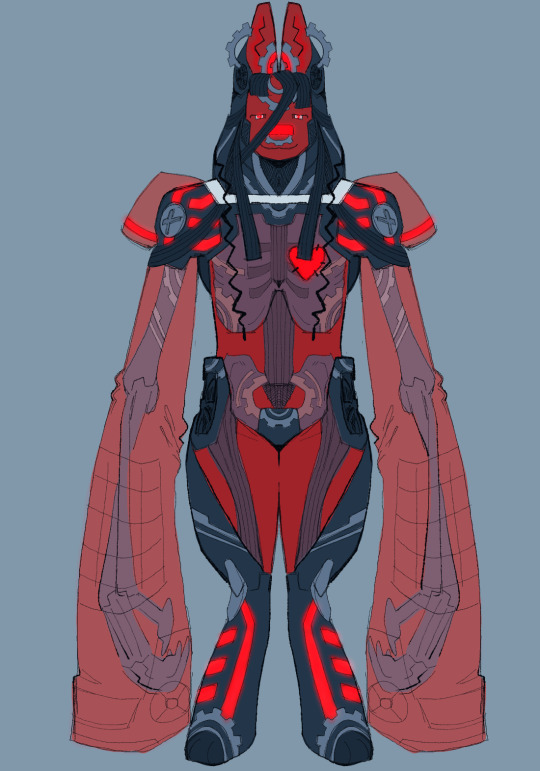
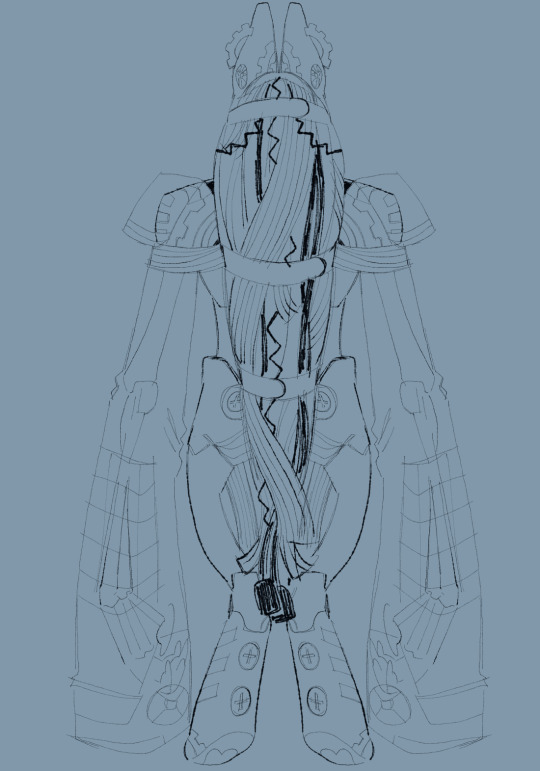
my new pc, furrified as a weird protogen-like wolf something (she has a tail i promise its behind all that gorgeous cable management of wire-hair)

her insides (yeah she is mostly empty looking cuz of the small GPU)

her predecessor's ref (she is a protogen-like kitty-like bot with fishies inside(i like fishies) and a giant fish tank on da back) (also a lil bit hatsune mikuish
#protogen#robot oc#my art#their designs are compilations of all my pc stuff with the peripherals#heart is inspired by her having a GPU of my previous pc who almost died after 4 years of constant service on the verge of collapse#(meaning faulty#secondhand and unfit for my gaming style/preferences low-power parts)#i thank her for her service#im thinking of them as a doomed yuri...#idk if i can call them both protogens? idk the specifics they are just lil animalish looking bots correct me if im wrong
7 notes
·
View notes
Text

Couya Haidamane, an odonii soldier-priestess and a commander of the militia accompanying Stavis Amanti's pilgrimage to the Sons of Creation. She is not of particularly notable rank, but is chosen due to being the younger sister of Faiza Haidamane, a high-priestess of the odonii and likely candidate to become Odomache (the leader of the odonii, believed to be a physical incarnation of God's Lion Face).
While devoted to the odonii order and more or less loyal to her sister, Couya harbors beliefs that could be deemed as heretical to the Faith of the Seven Faced God. She hears God's voice in her dreams, sees Its omens, and is falling under increasing suspicion that it is she who has been chosen, she who will end the great drought, she who will become a Face of God Itself and bring death and subjugation to Wardin's enemies. All of this threatens to just absolutely kill the vibe of the pilgrimage, and she isn't well liked.
She is stone faced and serious, appearing utterly humorless, even devoid of emotion. She has a strong distaste for men, stronger distaste for eunuchs, and her homophobia extends beyond the setting-typical. She doesn't seem to like anything besides guns and explosives, really. There's a lot going on in her head though. More than anyone knows.
(One of the main characters of the story tentatively titled 'The White Calf')
#Her design is pretty subject to change. I've had the general premise of this character for a lonnngggggg time but her previous design was#re-applied to Rhea Sur-Tigiiz (who is peripherally in the story as a teenager)#the white calf#couya haidamane
101 notes
·
View notes
Text
Thank you to everyone who gave me computer mouse suggestions, I really do appreciate them. I had a few picked out to try but ultimately went with the significantly riskier method of Buying Some Random Mouse I Found At the Thrift Store, not exactly a recommended option but one that did only cost me $3
#actually i bought 3#one is missing the dongle#one has the dongle but also has exposed circuitry when you open the battery compartment??? appears to be an intentional design choice#baffling#the third is wired and the one i will most likely be using#although it is a bit flat for my taste tbh#its a dell tho#their computers are a joke but their peripherals have always held up well for me
9 notes
·
View notes
Note
Magic Anon time! Turns you into a humanoid sheep person for a day or two, or something.
(//Yes this is because i saw you joke about Kromer and cult of the lamb)
[Just as Kromer is getting used to having to wear a maid dress she suddenly feels... displaced. It's almost like within a blink her vision has changed. The bright colors she's enjoyed suddenly drain from her vision. Yellows and oranges appear muted, reds are muddled... Yet blues seem vibrant.]
[This is so similar to when Kromer had changed into a prosthetic body. Yet it also is quite different. With a cold stake of fear striking Kromer, the woman lifts her hands to make sure they weren't robotic. And yet... Her nails are black? Kromer doesn't paint her nails. Kromer still has fleshy hands (beautifully human hands) which the woman is grateful for. Yet, Kromer can't help but feel something is off.]
[Kromer tries to take a step to stabilize herself against the wall, but the Eleventh Sinner immediately loses balance. It feels as if she is walking on stilts. Kromer hits the floor quite roughly in an undignified manner, the woman just hopes Sinclair didn't hear it...]
[Kromer takes a moment to collect herself before trying to take stock of what changed about her. Kromer can tell there is a weight on her head, as if a crown has been balanced. Her hair feels... frizzy. Actually, that odd frizzy feeling travels down her back and under her dress. Kromer doesn't think she is liking the implications of this.]
...haaahh...
[Kromer belatedly realizes one new thing. She can't feel her toes. That is what drives the woman back into a frenzy. Kromer shuffles her skirt out of the way only to be met with two ovine legs. Her legs appear to have wool on them, almost as if Kromer is wearing pants under the maid dress. At the end of each leg are two hooves Kromer is meant to balance on. How is Kromer meant to balance on that?? Kromer feels what she can only assume is hysteria start to leak into her fear. Her form keeps being changed so easily. Her humanity keeps being stolen from her so easily. Kromer can't even do anything to fight it.]
Huhuhu...
[Kromer can't stop herself from giggling. This is such a ridiculous situation. The woman rubs at her eyes to try to rid herself of the budding tears. Kromer needs to hold herself together, eventually Sinclair will fetch her and Kromer cannot be upset when he does.]
#lcb rp#limbus company rp#project moon ask blog#swap lcb#{few notes about the sheep design following}#{the sheep i decided to 'fuse' kromer with is a Heidschnucke Sheep. One of the horned heath varieties where ewes also can grow horns}#{sheep are such cool animals btw! due to the placement of their eyes and shape of their pupils they can see almost 320 degrees around--}#{--themselves. But they have poor depth perception. Kromer has it extra fun tho cuz she doesnt have sheep eye placement.}#{kromer has human eye placement which means that her peripheral vision is not as great as a sheep}#{was not mentioned at this point cuz kromie is busy hiding a panic attack. but she has two horns and floppy sheep ears also.}#{her hair is sheep wool with the yellow highlights replaced with black due to being Heidschnucke}
3 notes
·
View notes
Text
i’m sorry why the fuck does your VR advertisement have a shitty horse statue for a seat????

this is actually a great time to talk about peripherals and ergonomics >:D
Okay, so; there are a few considerations to make when you’re buying any kind of gaming peripheral, regardless of whether you’re an arcade company or an individual user. These are:
1: What does it actually do?
Is this a stupid question? Not if you’re one of the thousands of people who bought a Kinect. Think about it like this: why would you *ever* fucking use a Kinect outside of specific games tailored to use it?
Let’s ignore all of the problems with it. In what possible scenario is a traditional game designed for play with a controller better-played using motion tracking? Differently abled people have peripherals that can accomodate for different numbers of fingers or amounts of hands &or hand mobility (M+KB is a tried and true method that realistically only needs a palm and finger to operate, maybe with a foot pedal system if you can’t reach WASD), so it’s not for that market. And it’s not compatible with other titles anyways unless you mod the damn thing. So what does it actually do?
It lets you play one, maybe two games. So what it actually is, is a large, complicated, expensive-ass access key.
2: Is it the best option for what it does?
VR gloves and sticks are more or less the best solution we currently have for ‘solving’ motion in a 3D simulated space, and even then, they can’t exactly move you around in your room for you (not without making your inner ear Very Cross with you). A horse is… certainly one option to direct your motion, but there are a few others.
Those that come to my mind specifically are harnessed movement discs, foot pedals, and basic-ass leg tracking. If you have none of these, well, then that’s why VR likes to use your arms as a movement indicator, or lets you teleport from place to place.
Now, out of all of these, which would you actually use the most in your general gamespace? Personally, I’d go for the leg tracking or the disc, and it’ll likely be around the same price as that stupid fucking horse. If we’re talking about motion simulation, then generally I would point at haptic suits as being more practical, or even a chair of similar construction to the horse, without the horse.
“But wait!” You say. “Dokky! Why no horse?”
Well, because…
3: How long can you use it before it hurts?
Innuendo kind of intentional. We *are* talking about toys and peripherals here. (Cough.) Anyways.
All peripherals (and ergonomic Things in general) need to be evaluated for their ability to harm the user, accidentally or intentionally. This is why most cars’ auto closing features are very finicky, for example (say, to avoid cutting fingers off. Eat shit, Elon). In this case, functionally, we are looking at a chair that can jostle the user around for possibly hours on end, on a horse saddle. Now. What kind of damage can that cause?
(Horse riders in the chat, you already know.)
We’re talking about a sore lumbar from repeated unsupported linear stress. We’re talking hip problems from a large splay angle. We’re talking leg muscle aches from holding them in constant tension. We’re talking posture issues from zero back support in a high stress environment. You know those bull toys that try to throw people off of their backs with zero support? This is literally that (probably toned down substantially). Why the *fuck* would you play a videogame while riding one of those? Most importantly, are you really signing up for a chiropractor in addition to the onboarding cost of the horse, let alone the game? If you’re an arcade, can you *afford* a fucking medical bill?
This is, unfortunately, the one scenario where those awful racecar seat gaming chairs actually make sense. Because, do you know what a racecar chair actually *does?* It buckets you against a cushion to stop you from falling out and keep you mostly comfortable. *That* is a better design solution to a linear acceleration chair, and frankly, I’m a little mad that I came up with it.
4: Conclusion
Just go ride a horse. Don’t buy old merry-go-round junk to try and cram into your room (there’s another one; how much space does it need for storage?), and for the love of Gods, think about your peripherals. Oh, and.
5: Happy birthday, @happyhydralisk (discord)
Happy birthday, Hydra.
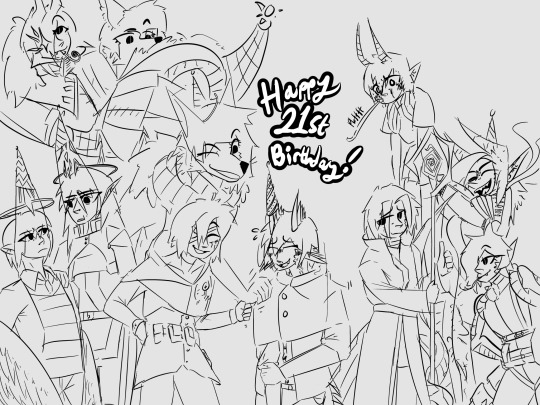
#ergonomics#ergonomicdesign#ergonomicseating#gaming peripherals#design talk#oorps this is a birthday post now#thank y’all#for reading :D#and hey! if you recognize any shitty peripherals in your own home right now#or worse#on your shopping list#now you have some idea of how to find less awful ones :3
4 notes
·
View notes
Text

the least coy they've been about their corpse-flower-inspired audrey ii so far, though of course simply via in-development concept art
#the next least coy is further corpse flower design costume design / production glimpses#then: peripheral look at roots or leaves or whatever other kind of Tendril#(looking up ''hey is that etymologically connected to 'tender'?'' yes)#then: thingy probably standing in for [plant puppet goes here] in rehearsals#fun to shake things up. think of a way a plant thing could be weird; or a weird thing could be botanical#lsoh#all this to say: classic maneuver to have a few pics posted on facebook that isn't anywhere else#not fully crossposting the same things across all platforms....well it is enrichment in a way
6 notes
·
View notes
Text
man if i actually made designs for the 2 TTS's i still have saved i'd probably be worlds only person who made ocs of those
#dectalk speaking#like i would maybe design them but i wouldnt make them part of the story bc the cast is so big already HSFGTFH#theyre the TI99/4A text to speech peripheral#and the most niche one yet#currahs microspeech or µspeech
11 notes
·
View notes
Text
the ONE good thing tumblr staff has implemented is the reblog graph
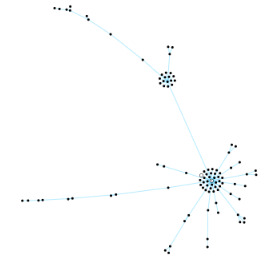
this is from my post about the new layout being ass so yeah keep reblogging it, i want us to be a happy lil' ecosystem with visual proof of how pissed off we are LOL
#i still stand what i said btw#i'm actually finding myself not as active on the platform rn because how it's designed puts its features out of sight out of mind#and i'm ADHD like 80% of the people on this platform so that's NOT good#i actually forgot i have an inbox full of asks that need to be responded to#but it's so out of my peripheral now that i don't notice it
37 notes
·
View notes
Text
they should've changed the side chigiri's hair was braided on when he joined manshine
#i've not the most football knowleve but since he usually played on the right i would have accepted his hair only being up on the left side#because that's what he needs to see. but on manshine he's on the left now and now his hair is covering his peripheral vision.#but also i should not expect this from bllk character designs..#masayapping
6 notes
·
View notes
Text
it's actually so so soo cool to me that miguel's suit is a hologram and performs like an LED screen on his body; i love that they added this detail bc it gives so much depth to his suit that would otherwise be lost like it makes the meso american inspired patterns on his suit such an enagmatic glow and makes his suit so cool to look at!!! just a million stars glowing on him !!!
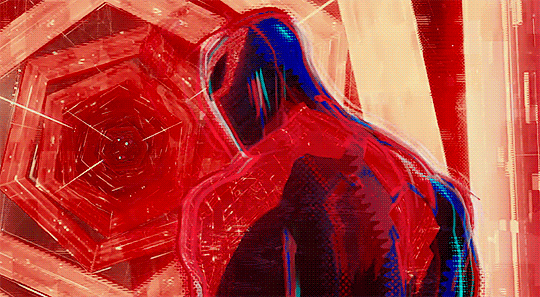
SEE !!! THE CIRCUITRY... ITS SO FUCKING COOL !!!
#i just think he's neat#little fuckin nerd miguel trying to make himself a cool looking suit after he literally expanded to twice his previous size lol#he has the pantone app open on his monitor#“lyla change the red from DF1F2D to B11313”#my personal hc is that he for sure added the mesoamerican influences much later on bc he had a spidey moment with a little latine kid#saved a kid downtown from those public eye goons and the kid looks up half scared/half in awe at his stature#the kid's guardian yells something in spanish while running towards them#so naturally#he squats down to be eye level with the kid and says something along the lines of “everything's gonna be alright kid” in spanish#and he swings away#but just out of his peripherals he sees the kid lose their mind#he picks up a faint gracias or other term of gratitude and lets a small smile escape his lips#and then he starts to notice just how many spider ppl have incorporated their heritage/nationality into their costume#and he's reminded of that kid#how excited they were to share something as binding as their mother tongue with thee spiderman#now all of a sudden he's spent the next 16 hours trying to incorporate traditional mesoamerican patterns into his costume's design#maybe it's lyla's idea to make them golden looking so they're endlessly shifting in a stunning contrast against the red#my miguelito#yeah#im totally normal abt him btw#idgaf actually#spidey#i can fix him#miguel o'hara#atsv miguel#miguel spiderverse#miguel spiderman#spiderman 2099#spiderman atsv#spider verse
10 notes
·
View notes